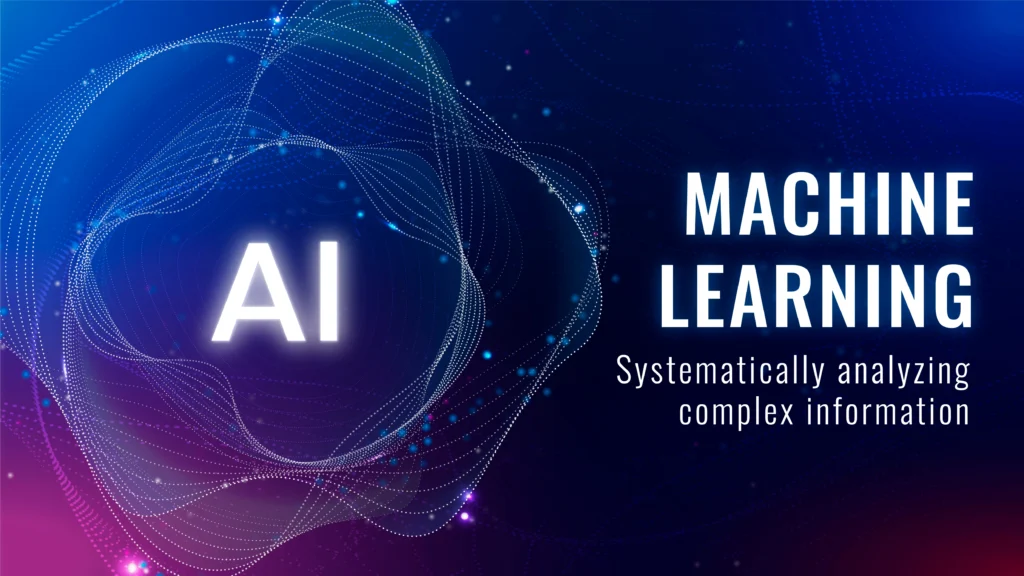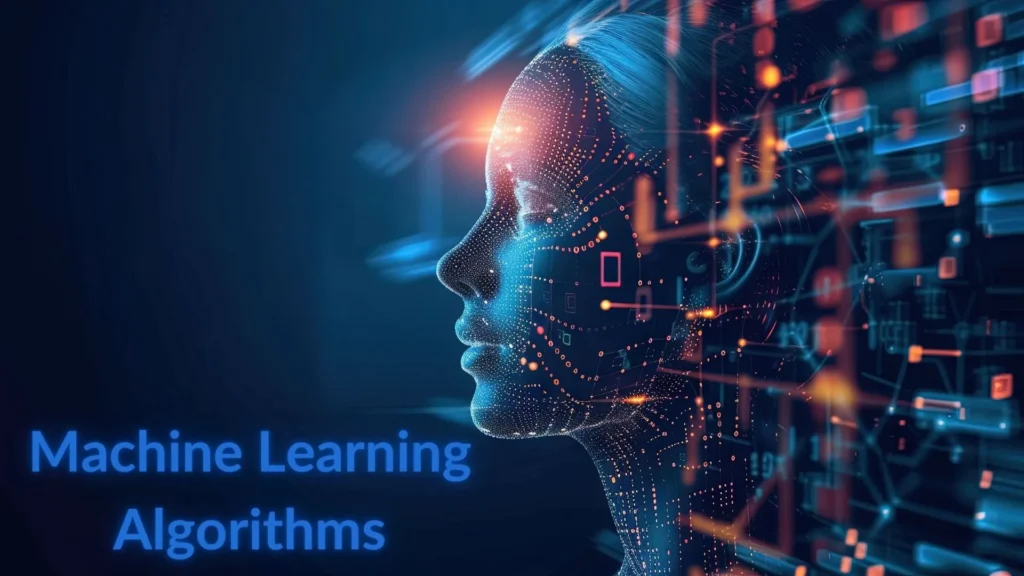Introduction of Machine Learning Algorithms.

The modern-day digital explosion of data opened avenues for advanced technologies like machine learning to become indispensable in many applications. Probably one of the most interesting applications of ML in place is to develop recommendation systems, which enrich the user experience across industries ranging from e-commerce and entertainment to social media. The paper will describe the key concepts of recommendation systems and various machine learning types, as well as how these technologies are altering gigantic industries, such as fraud detection.
What is a Recommendation System?
A recommendation system is one that suggests products, services, and content based on various algorithms and data about users. Basically, these systems are to help a user in finding items that would match his/her preferences, therefore enhancing the user experience. Recommendation systems form a very important basis for companies like Amazon and Netflix, in regard to personalization during user interaction, which helps in improving customer satisfaction and loyalty.
Types of Machine Learning

Machine learning can loosely be classified into three categories including:
Supervised Learning: It involves training a model with labeled data as such, the pairs of input and output are well known. This kind of learning finds its applications in classification and regression analysis.
Unsupervised Learning: It is a method wherein the model learns from unlabeled data to find patterns and relationships within the data for which no prior knowledge of the outcome is available.
Reinforcement Learning: In this type of machine learning, an agent learns to make a decision based on the feedback it gets from the environment. It typically finds its application in robotics and game development.
Unsupervised Learning in Recommendation Systems
Unsupervised learning finds its greatest application in recommendation systems to perform clustering and pattern recognition. These systems make possible the grouping of similar users or items through user behaviors and preferences without any provided labels.
For instance, some clustering algorithms rank users according to their browsing history and enable the system to recommend products that other people similar to them have liked. In this way, the system is highly personalized and suggests to the users those things that they might have never known existed.
Machine Learning Algorithms for Recommendation Systems

A number of algorithms are put into work to build an effective recommendation system, the following are some key ones:
Decision Tree Machine Learning
Decision trees are one of the simpler, yet more powerful machine learning methods to be used in classification and regression applications. They function by splitting data into branches based on feature values that lead to decision nodes and leaf nodes, which show the outcome. In recommendation systems, decision trees analyze users data to judge what items are most likely preferred from interactions earlier.
Support Vector Machine (SVM) Machine Learning
The Support Vector Machines are quite good in performing classification and regression tasks. In principle, the workability of SVMs depends on the idea of finding the best possible hyperplane for segregating data points into different classes. Recommendation systems can use SVM to filter items by analyzing the user preferences and categorizing them into classes for the suggestion of most relevant items to users.
Neural Network Machine Learning
Neural networks, inspired by the structure of the human brain, would include sets of interconnected nodes or neurons. These models actually work well when working with complex datasets, and in a recommendation system, they learn intricate patterns in user behavior. Consequently, enabling neural networks to make more accurate recommendations by processing large volumes of data, which are able to dynamically update as user preferences change.
Deep Learning Algorithms
Deep learning is a subclass of neural networks that uses a high number of layers for feature extraction in data. It has transformed recommendation systems because it can now process big and complex datasets with time efficiency. These deep learning algorithms are also able to identify hidden patterns and relationships, thereby making highly personalized recommendations that keep adjusting to the preferences of the users.
Credit Card Fraud Detection Using Machine Learning
Machine learning is very much essential in finance when it comes to fraud detection in credit cards. Fraudulent activities result in great losses for both consumers and financial institutions. Advanced algorithms put into place enable businesses to monitor transaction patterns in real time to pick out anomalies indicating fraud.
Therefore, these models learn from previous transaction data what is considered normal behavior. If a transaction is outside the norm, it can then be flagged for review. This proactive approach will protect users and institutions alike by mitigating risk with better efficiency.
Different types of Machine Learning Algorithms for recommendation system.

To develop a strong recommendation system, there is a need to understand the different available algorithms. Here are some widely used ones:
Linear Regression: This algorithm models the relationship between a dependent variable and one or more independent variables. It finds a wide range of applications in predicting continuous outcomes.
Random Forests: Ensemble learning methods that build multiple decision trees and combine their predictions to enhance accuracy and reduce overfitting.
Clustering Algorithms: These algorithms group similar items or users together according to their traits. K-Means and Hierarchical Clustering remain popular techniques of segmenting data.
Matrix factorization is employed in recommending items based on the latent factors by factoring large matrices into lower-dimensional representations.
Future of Recommendation Systems
The future of recommendation systems looks great, considering how technology is still improving day in and day out. Some emergent trends noted include the use of artificial -intelligence in the offering of more personalized services, improvement of user experiences. Innovations like NLP will have the recommendation systems understand user preferences expressed in textual formats.
This further helps in gaining users trust as they will have a better understanding of how the recommendations are being generated. Recommendation systems are developing alongside the increase in competition, especially when businesses adopt advanced technologies.
Conclusion

The integration of recommendation systems with machine learning revolutionizes the way business enterprises interact with customers. Employing a variety of algorithms, they can deliver a personalized experience that increases user satisfaction. Applications are huge, from fraud detection in credit card transactions to developing strategies in e-commerce.
And as we look into the future, their continued evolution promises even more personalization and efficiency regarding how we go about consuming content and making our purchasing decisions.
Frequently Asked Questions:
The four main types of machine learning algorithms are:
- Supervised Learning: Type-one employs datasets that are completely labeled to train models in which the algorithm tries to identify what the input should produce. The approaches familiar are; Basic and advanced python, Data Preprocessing and feature engineering, Supervised learning–Linear Regression, Decision Trees, Support Vector Machines.
- Unsupervised Learning: In this case, the algorithm works on non-supervised data with the aim of categorizing the data or clustering of the data. Clustering for example the K-means and association are usually used on large datasets.
- Semi-Supervised Learning: This method combine the labeled data and unlabeled data for gaining better learning accuracy. It is particularly useful when obtaining a fully labeled dataset is expensive or they will take lots of time to prepare.
- Reinforcement Learning: Here, an agent wants to decide when and what to do in order to achieve the most ‘rewards’ in an environment. This kind of approach is commonly used in robotics and game playing and in navigation systems.
In the context of machine learning algorithms are defined as set of operations or guidelines that instruct a computer how to go about a certain task, finding patterns and making choices based on a given data. They allow a machine to learn from the data and get better with what it is doing instead of having to be coded for a particular job. These are the algorithms used in the model among them being linear regression, decision trees, and neural networks and each of them is duty to instruct a certain type of data and problems.
Five popular machine learning algorithms include:
- Linear Regression: Applied where estimating target quantity which is a real value is of interest, given input characteristics. For this reason, it assumes that there is a direct proportionality in the extent of input and the level of output.
- Logistic Regression: A type of algorism which assumes the likelihood of the feature variable and the result of the binary choice made out of a possibility zone.
- Decision Trees: A tree decision model that breaks data into branches to make decisions based on feature values making it easy to understand.
- Random Forest: A form of learning technique that integrates the use of more than one decision tree, mainly when attempting to address the problem of overfitting.
- Support Vector Machines (SVM): Supervised learning method that locate the maximum margin hyperplane for different class in the data samples.
To apply machine learning algorithms, follow these steps:
- Define the Problem: Pretend that you are to solve a classification problem, a regression problem, or a clustering problem, which is it and why?
- Collect Data: Identify data which is going to be used for training the model. Make sure it has to be spick and span and properly arranged.
- Preprocess Data: Pre-process the data by dealing with the missing values, scale the features and convert categorical variable into numerical.
- Choose an Algorithm: The right algorithm should be chosen in accordance with the type of the problem and to the characteristics of data that is being processed.
- Train the Model: Now divide the data into training and testing data set. On the training data provided, train the model.
- Evaluate the Model: To assess the performance of the model in testing situation select the metric like accuaracy, precision, and recall from the testing set.
- Optimize and Fine-tune: Modify characteristics and settings of a given model in an attempt to enhance the predictive.
- Deploy the Model: Thus once you are satisfied with the model, use it to predict on new data.
The three main categories of AI algorithms are:
- Machine Learning Algorithms: These algorithms make systems capable of training from data, and optimizing their function without the necessity to code.
- Natural Language Processing (NLP) Algorithms: NLP sort of makes computers able to read, comprehend and even write as human beings do in a manner that helps them translate between languages and analyze feelings among others.
- Computer Vision Algorithms: These algorithms allow machines to understand and manipulate visual data from the world which is applied conventionally in identification of objects.
Yes, Convolutional Neural Network (CNN) is a machine learning algorithm which is used for the purpose of analyzing structured grid data and is well suited for image analysis. CNNs are especially used in image classification, object detection, and recognition because convolutional layers inherent the spatial pyramid of the data.
CNN (Convolutional Neural Network) is a type of neural network that is created for processing a special type of data, which is a grid, which is typical for image recognition types of problems. It uses convolutional layers to reduce the computational work of feature extraction in the image, and makes it most suitable for image work.
RNN – Recurrent Neural Network is a distinct type of a neural network well suited for working with sequential data – with temporal data such as a time series or with text data. The most relevant aspect of RNNs is their ability to consist of internal memory that means it can remember the inputs were given before and can be tender for applications like language translation and speech recognition.
LSTM stands for Long Short-Term Memory, although the first two letters ‘LSTM’ can also represent Lost Sum Time-to-Maximum. RNNs are developed in a simple form through LSTM which is capable of learning long-term dependencies opposed to other regular RNNs which are faced with the vanishing gradient issue. They are used in areas like assisting language translation and recognizing of speeches.
Actually, TensorFlow is not considered as CNN model rather TensorFlow is an open-source machine learning platform from Google. CNN is a type of machine learning, TensorFlow gives the tools and libraries needed for building and training those models. With CNN architecture, the TensorFlow users will be capable to undertake tasks like image recognition and object identification.
The four branches of machine learning include:
- Supervised Learning: Training a subset of labeled data for predicting outcomes is the key idea in this category.
- Unsupervised Learning: Works with identification of structures in data without prior defining.
- Semi-Supervised Learning: Blends labeled data into the training of the models and unlabeled data leading to increased accuracy.
- Reinforcement Learning: Devoted to teaching employees to determine how to behave in a setting in order to achieve the greatest total of possible payoffs.





